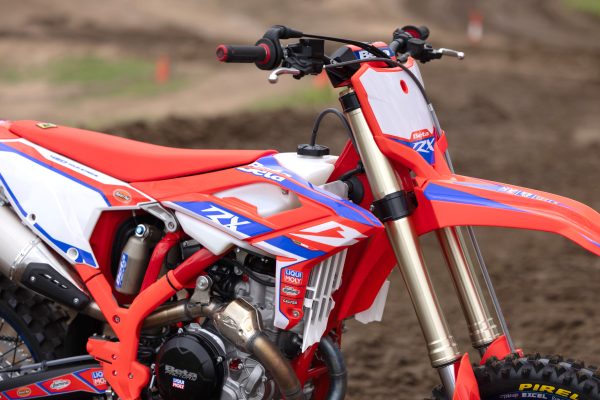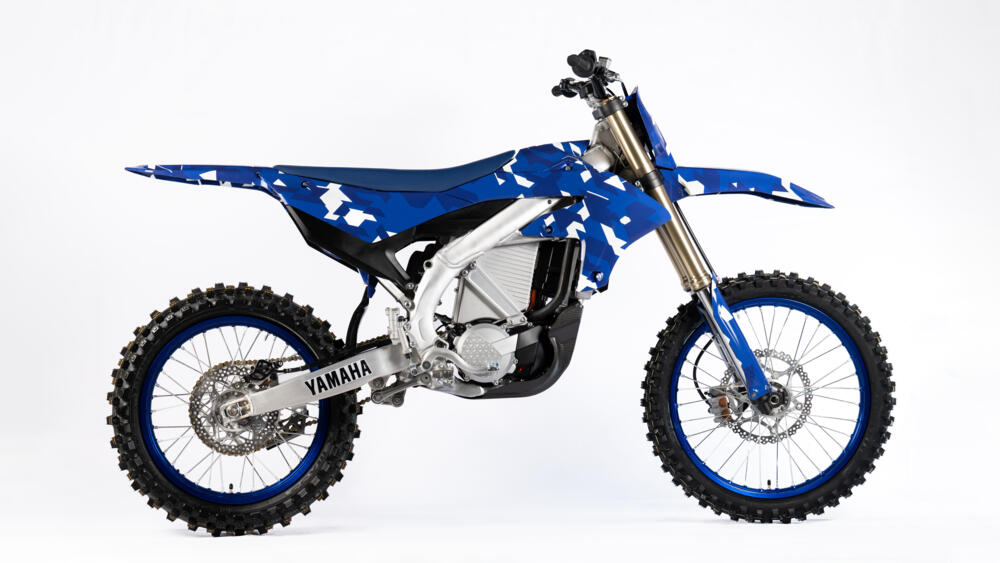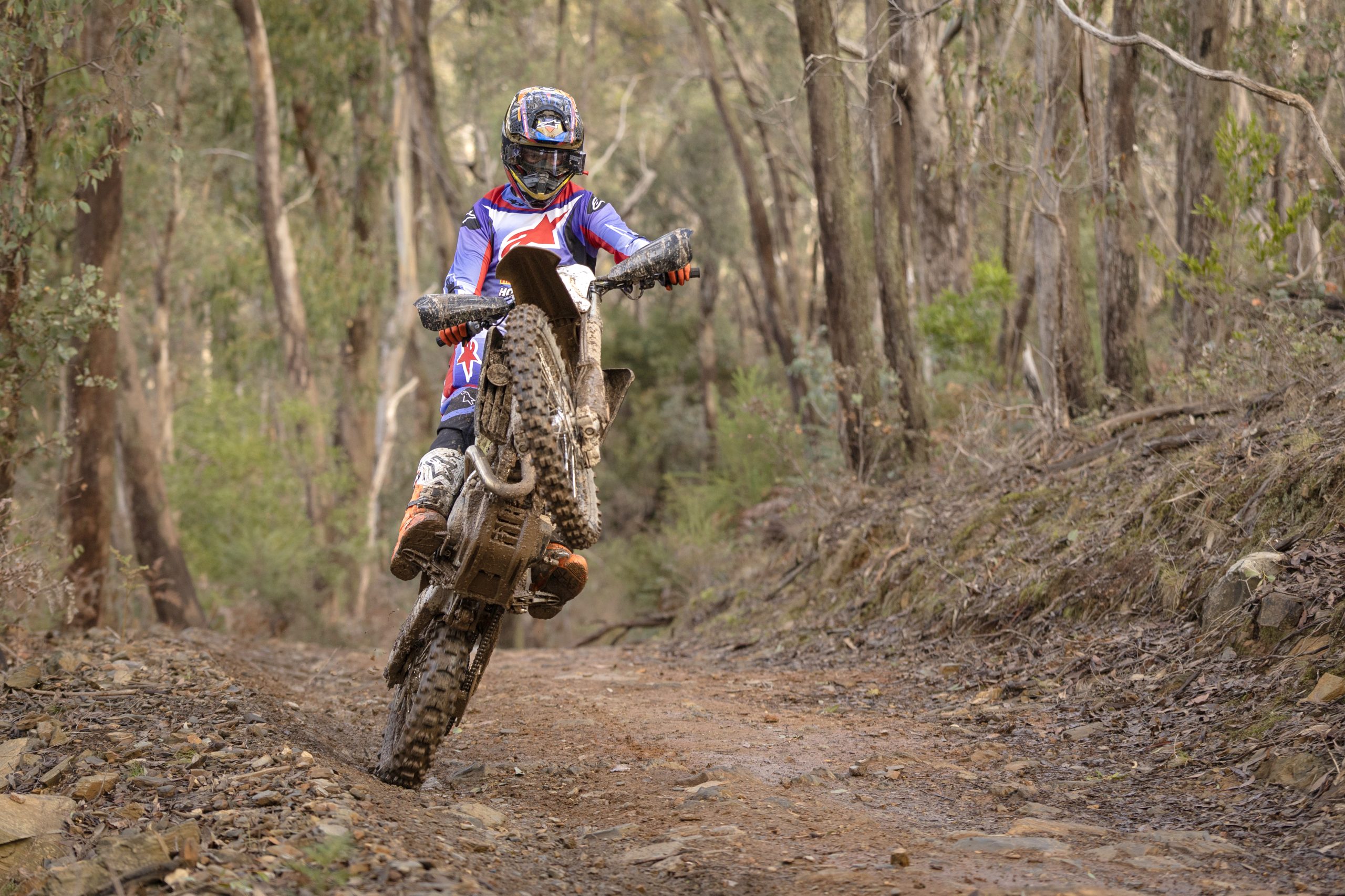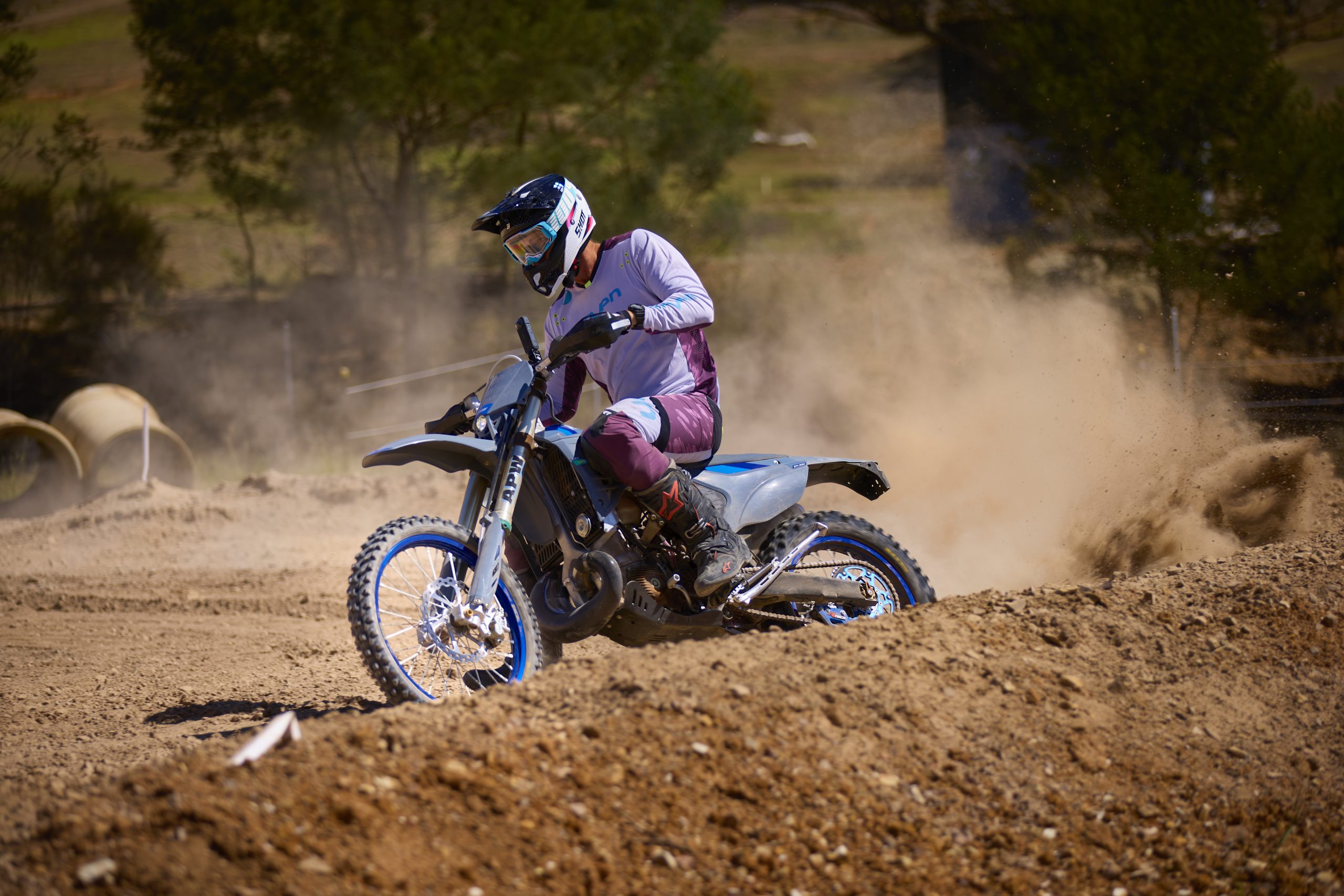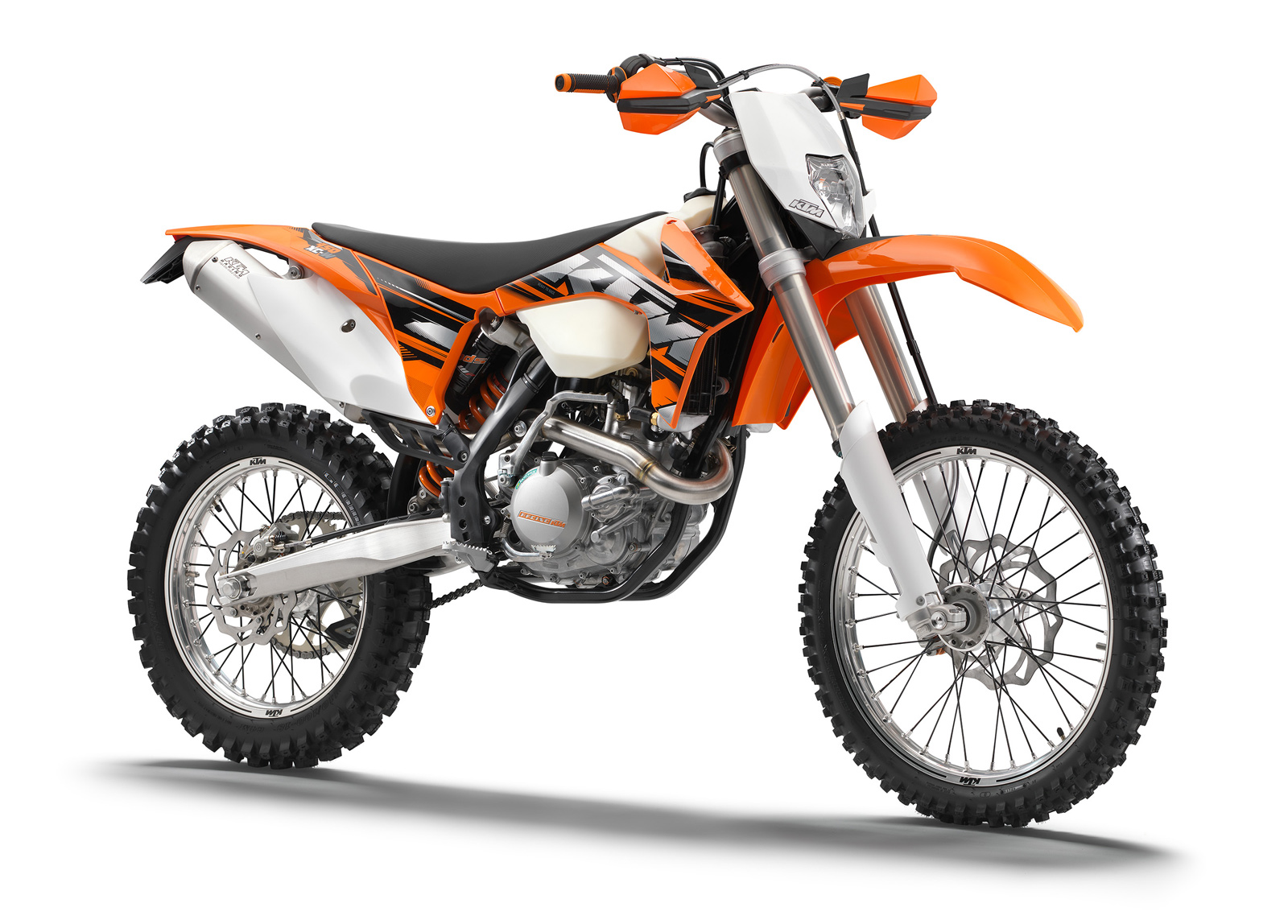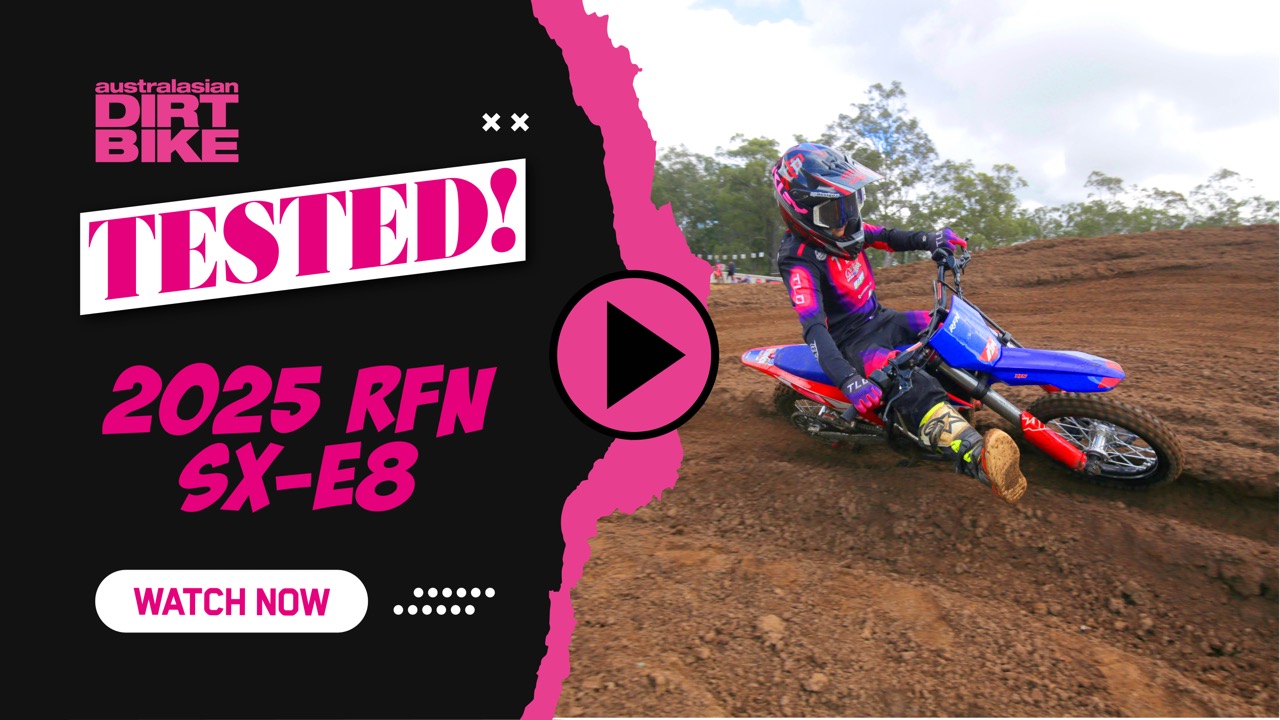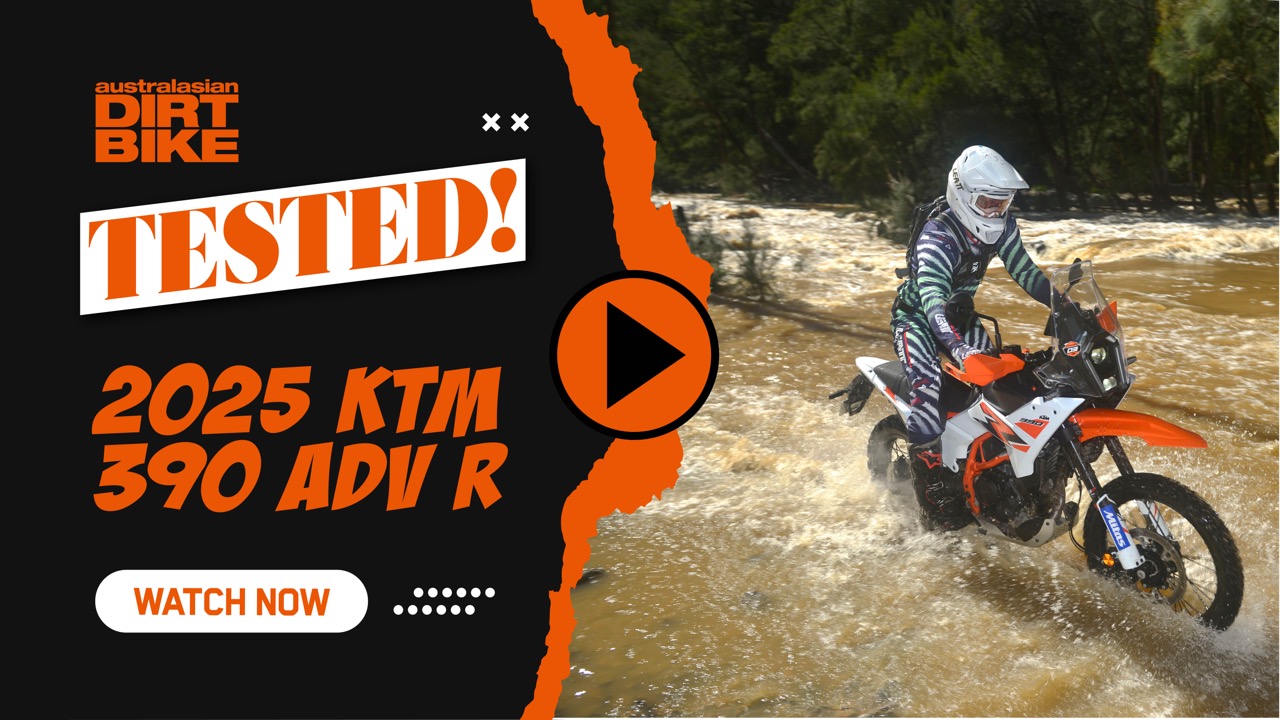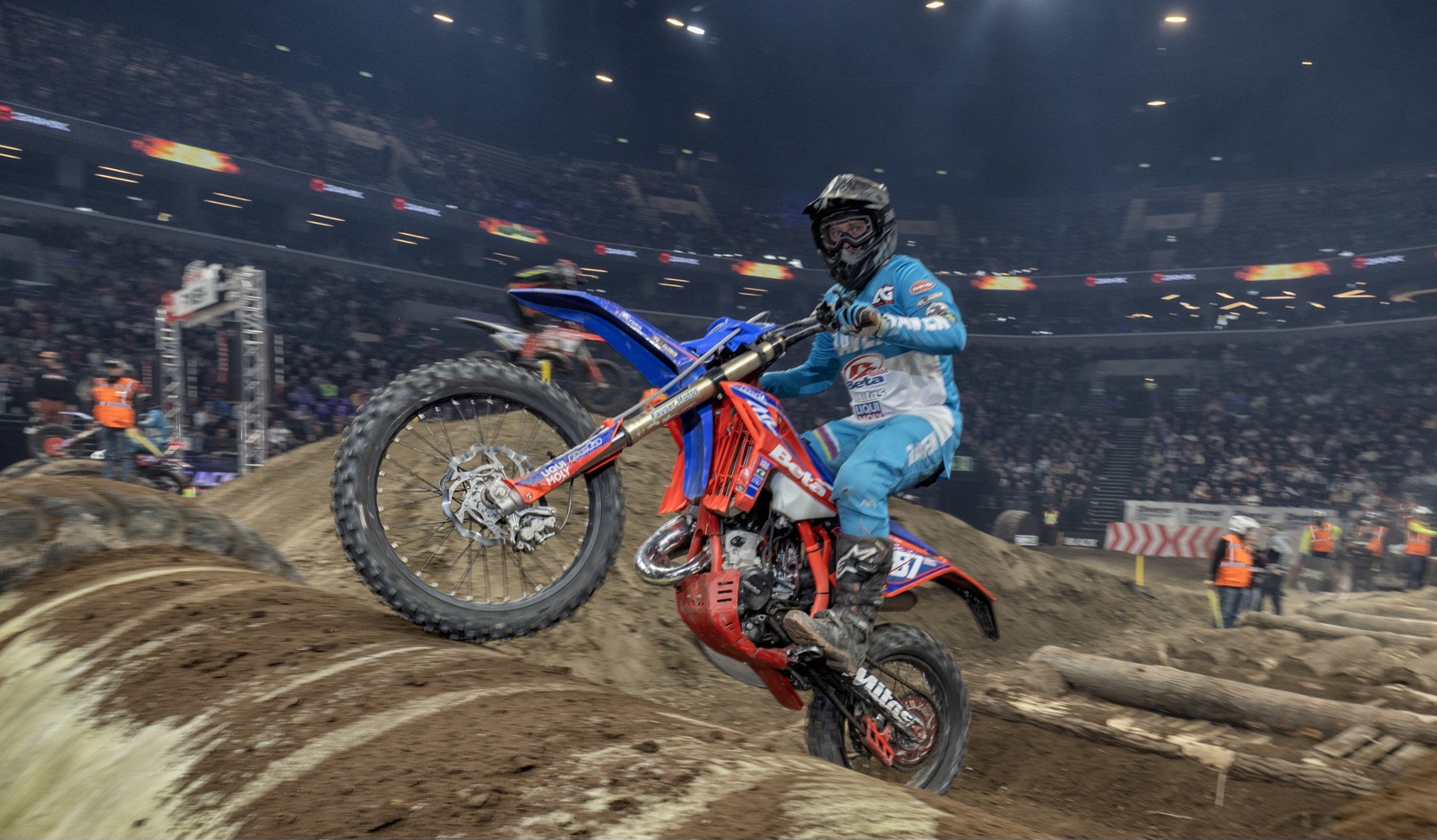Last year’s RX 450 was Beta’s first attempt at building a 450cc motocross machine. The Italian manufacturer is better known in the off-road and trials scene for its spread of competitive models ranging from small-bore two strokes to big-bore four strokes, so this is new territory and the 2025 Beta RX 450 has been freshened up.
Beta has offered a 300cc two-stroke motocross bike in the past but the RX 450 has only been on the market for 12 months, while it has been under development and raced in MXGP for four years.
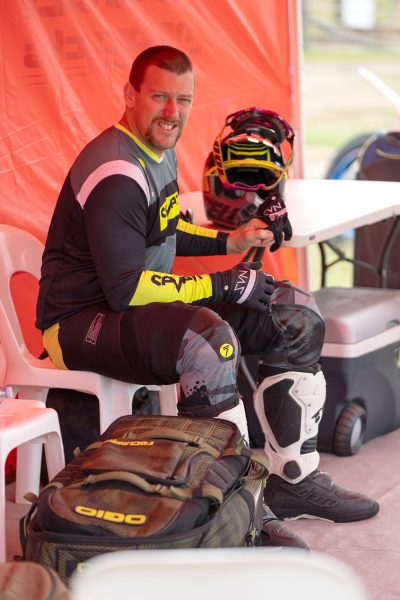
While we had the opportunity to test a pre-production model of the RX 450 last year, this is the first time we’ve tested the production model, and so while there are a few small updates to the 2025 model, the bike we are testing is exactly the same way you will be able to buy it from the showroom floor… apart from a set of Pirelli Scorpion tyres that have been fitted in place of the standard Maxxis tyres.
We jetted up to the Gold Coast and drove out to Queensland Moto Park to test ride the RX 450 on the picturesque motocross track which entailed some nice loam, ruts and jumps up, and down the side of a grassy hill.
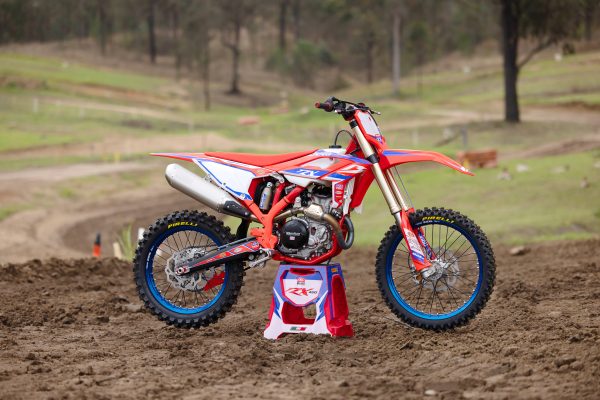
What’s New?
New for 2025 is the rear subframe and air filter housing. The geometry of the housing remains the same but the stiffness and strength has been increased, while air filter changes remain tool-less from the left-hand side.
The KYB internal settings have been revised to increase stability at speed and a new lithium battery has been fitted with higher amperage to improve starting.
The rear sprocket has been increased one tooth from 50T to 51T and the handlebar block has been replaced with a set that raises the ’bar by 5mm and reduces vibrations through the handlebar. This year’s model also gets less bulky footpegs and a rear axle that has been increased 2mm in diameter to 22mm.
The engine mapping has been updated and the bike is now delivered with four different throttle pulleys that can be changed to customise the throttle response.
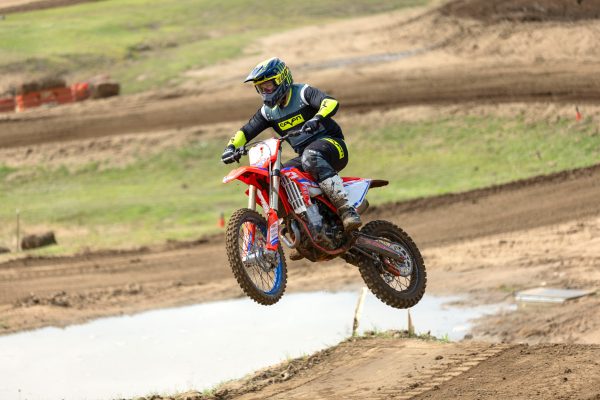
How Does It Ride?
The 2025 RX 450 is an easy and forgiving bike to ride. The suspension is on the softer, more compliant side while the engine is tuned to be rider friendly. The entire bike is built around motocross; this is not just an enduro model with the headlight removed, so the gearing and power curve all work well for motocross.
The power curve is sharper and more aggressive than an enduro bike but still not as aggressive as many other motocross brands. This isn’t a terrible thing because it makes the RX 450 easy to ride and easy to manage.
The frame is flexible and doesn’t have the solid, rigid feel to it that many modern alloy frames have these days. The bike feels tall, especially through the seat, and the overall ergonomics are unique to Beta.
To optimise handling I set the sag at 105mm and lowered the fork in the triple clamps by 2mm to lift the front end of the motorcycle. Then I went in stiffer on the compression by five clicks both front and rear, and then the bike felt more settled turning into ruts as well as through the middle of the turns.
I spent the majority of the test in the dry map where the engine delivers its most aggressive power and I wouldn’t feel the need to change anything or use any other maps unless it was super slippery. The engine revs don’t spike or climb super quick but the RX 450 is still is a 450cc machine, so it will still pull hard if you let the engine wind out. The KYB suspension has to be commended – it is smooth and comfortable with a very predictable feel that is easy on the rider.
If I had to summarise the Beta RX 450 in three words I would say: “Easy to ride.”
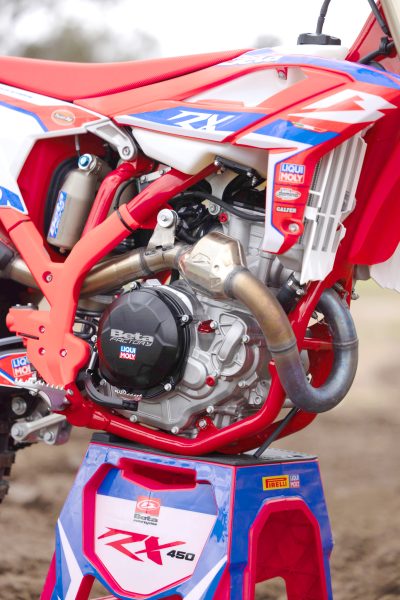
Who Does It Suit?
Thanks to its user friendliness, the Beta RX 450 will suit a wide variety of riders. Many modern 450cc machines are super-fast and aggressive, meaning you need to be highly skilled to handle them, but the Beta has a softer power curve and comfortable suspension, which means it will be a much easier bike to manage for beginner to intermediate riders.
I would even go as far as saying the RX 450 would be the perfect bike for a Vets rider or someone looking to get back into the sport after some time away. I also believe many club-level riders would excel on the Beta as you can ride it all day without being beaten up by it or becoming fatigued.
This bike also has has a lot of potential as a high level race bike and is a great package to build off.
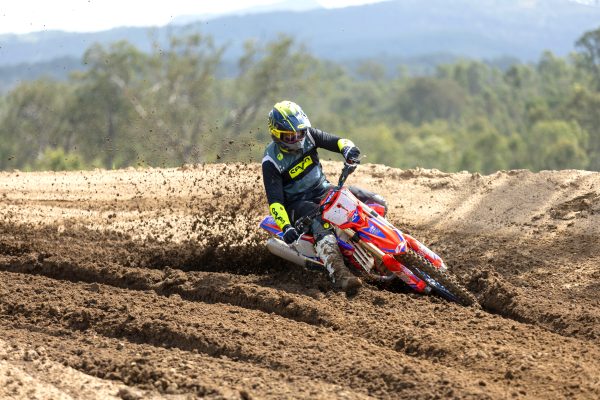
What Did They Fix?
I really enjoyed riding the RX 450 and had a hard time complaining about much. I had to go back through my notes last year and to remind me that I thought the front end was twitchy and had a loose feeling to it, while I also felt some vibration through the handlebars. This year the track we tested on was fast and I never experienced any of this, so I can only assume the new suspension settings along with the new handlebar blocks have resolved these issues as I found the 2025 model RX 450 to be a very smooth and stable machine at speed.
The 2025 model has new mapping and a larger rear sprocket and I found it to not only be smoother but more responsive and better out of turns. This could also be the fact that the machine we tested last year was a pre-production model and the mapping was still in development stages, but either way it was a welcome improvement.
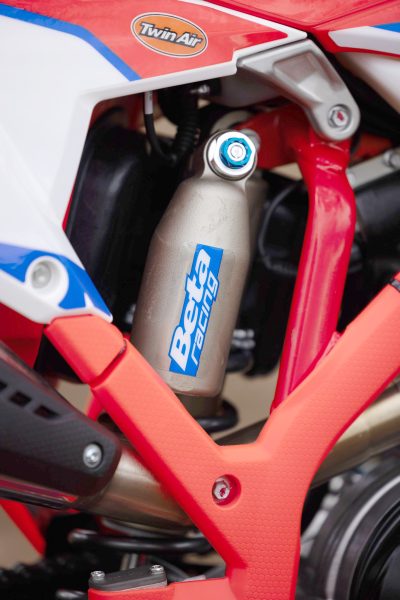
What Would I Change?
The bike in stock form is a great platform for the masses but if I was to take it racing then I would take a look inside the engine to see if I could improve the power. I would also then remap the bike to make it more aggressive, and spring and valve the suspension to be harder. I would also experiment with the optional throttle cams to see if they improve the throttle response and lastly I would look at tightening the torque on the swingarm pivot bolt and engine mounts to see if I could add some rigidity to the chassis, or maybe even look at different engine mounts.
These adjustments are only going to improve the bike for elite level racers and will likely make the bike feel very rigid and rough to ride for beginners and intermediate level riders. What a pro rider wants is very different to what a beginner or intermediate rider needs, with very little cross over between the two. This bike is built and tuned very well for most riders straight out of the box.
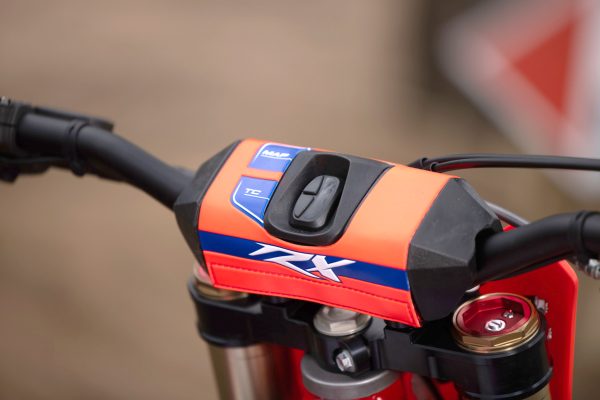
How’s Beta’s Support?
This is a question we get asked a lot. People would assume that because Beta is not as big as KTM or Yamaha that the support from the factory or dealers is not as strong. Beta’s warehouse in Florence, Italy has recently doubled in size and now employs over 230 staff with the anticipation of breaking into the motocross market. Following the same trend, Beta Australia has been focusing on growth and now has 30 dealers across Australia, with more to come.
The Beta warehouse is located on the Gold Coast in Queensland and air freights parts in weekly to make sure parts supply is up to date. The company also offers online ordering with direct postage to your door through the betamotor.com.au website.
Beta is making a big push to get as many people to ride a Beta as possible through demo days that circulate the country, so if you are keen to ride a Beta then contact your local dealer and request a test ride.
Furthermore, to increase presence on the race track, Beta has introduced Beta Race Support. The discount depends on the series and calibre of rider but Beta is now offering a program to get as many Beta motorcycles on the race track as possible to prove their competitiveness.
